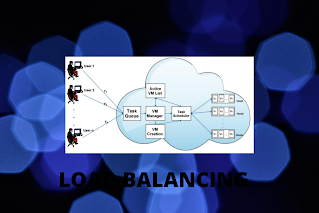Virtualization is an attribute of Cloud Computing, which refers to the creation of a virtual layer or an abstraction layer on the hardware components for cloning of the functionality of the original components into software.
NEED OF VIRTUALIZATION
The need of virtualization is to utilize the system in a best way without wasting any resources. The main aim is to manage and use the resources in the better manner so that no resources are left idle. This also helps to understand the trade-offs between performance and flexibility.
Due to abstraction layer on the hardware, multiple instances are created of the hardware resources in the form of software which are shared through hypervisor.
TYPES OF VIRTUALIZATION
Virtualization can be classified on the basis on:
1) Extent of Hardware Emulation
2) The technology or the area that is being virtualized
On the basis of Extent of Hardware Emulation following are the types of Virtualization:
1) Full Emulation: Full emulation means imitating the full functionality of I/O devices, primary memory, CPU in the form of software. Here, imitation of functionality means that the resources are being virtualized, i.e. emulated into software.
2) Full/Native Virtualization: One of the best examples of full virtualization is the VMWare. In full virtualization, fully hardware layer is simulated to provide the virtual machine environment. Users can run multiple guest operating systems simultaneously.
3) Para-Virtualization: In Para virtualization, there is no hardware simulation/emulation done by virtual machine.In this VM uses hypercall API to communicate with hypervisor for all purposes.
4) OS Virtualization: In OS virtualization, the standard operating system in a single system is divided into multiple instances so that each instance can handle each application of each user at a single point of time.
5) Application Virtualization: One of the best examples of Application Virtualization is the Java Virtual Machine in java software. Application virtualization means that the software application can be installed even if the particular environment is not available to the application. Like the java programs can be run on any operating system due to JVM that is why it is called platform independent.
On the basis of the technology or the area that is being virtualized following are the types of Virtualization:
1) Server Virtualization: Server Virtualization refers to the creation of multiple virtual instances of the single server, where each virtual server has its own operating system and applications.
2) Storage Virtualization: In storage virtualization, multiple instances of the physical or hardware devices is created or we can say that the pool of resources collected together is utilized by the number of users in such a way that they have their own storage device.
3) Network Virtualization: Network technology is a technique in which logical abstraction layer is created of the hardware and network resources, which gives a single view of the heterogeneous network hardware used within the infrastructure.
Cloud Computing





Nice
ReplyDeleteyou have written an excellent blog.. keep sharing your knowledge...
ReplyDeleteGoogle Cloud Training in Chennai
Google Cloud Online Training
That was a stunning opinion, thank you for this great guidance
ReplyDeleteLeadership Training In Chennai
Leadership Online Courses
Best Online Leadership Courses